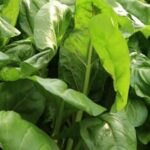Home Vegetable Gardening for Beginners: Exploring the benefits and joys of growing your own food, and highlighting the accessibility and affordability of starting a vegetable garden at home.
Have you ever considered starting a vegetable garden in your own backyard or on your balcony? Home vegetable gardening is not only a rewarding hobby but also a great way to enjoy fresh and nutritious produce. Whether you have limited gardening experience or none at all, this article will guide you through the basics of home vegetable gardening and help you get started on your journey towards self-sufficiency.
One of the key benefits of home vegetable gardening is the satisfaction that comes with growing your own food. Imagine being able to step outside and grab a handful of fresh herbs, plump tomatoes, or crunchy lettuce for your next meal. Not only does it provide you with access to healthy ingredients, but it also gives you a sense of accomplishment knowing that you nurtured them from seed to harvest.
Starting a vegetable garden at home is also surprisingly accessible and affordable. You don’t need a large plot of land – even a small balcony or patio can be transformed into a productive garden space. With some basic tools and supplies, along with proper guidance, anyone can create their very own home vegetable garden.
In the following sections, we will explore various aspects of home vegetable gardening for beginners. We will discuss how to choose the right location, essential tools and supplies needed, selecting beginner-friendly vegetables to grow, starting from seeds or seedlings, soil preparation and fertilization techniques, watering and maintenance tips, as well as harvesting and enjoying the fruits (and vegetables) of your labor.
So if you’re ready to dig in the dirt and tap into the joys of homegrown produce, read on. This comprehensive guide will equip you with everything you need to know to start your own flourishing vegetable garden at home. Get ready to embrace the wonders of self-sufficiency and enjoy an array of delicious fruits and vegetables that you grew with your own hands.
Choosing the Right Location
When it comes to home vegetable gardening, choosing the right location is crucial for the success of your plants. The ideal space for your garden will depend on factors such as sunlight, soil quality, and drainage. By understanding these factors and considering unique gardening methods like vertical gardening, you can create an optimal environment for your vegetables to thrive.
Sunlight is one of the most important factors to consider when selecting a location for your home vegetable garden. Most vegetables require at least six hours of direct sunlight each day, so choose a spot in your yard or balcony that receives ample sunlight. Observe the area throughout the day to ensure that it receives sufficient sunshine without being shaded by buildings or trees.
Another important consideration is soil quality and drainage. Vegetables require well-drained soil that retains moisture but doesn’t become waterlogged. To assess your soil quality, perform a simple soil test using kits available at gardening stores or consult with local agricultural extension services. If necessary, you can improve your soil by adding organic matter like compost or peat moss to enhance its fertility and drainage capabilities.
For those with limited space, vertical gardening offers a unique solution. Vertical gardening involves growing plants vertically rather than horizontally, making it an excellent option for small yards or balconies. This method utilizes walls, fences, containers on shelves or hanging baskets to maximize space while still providing enough sunlight and airflow for the plants. It’s important to choose compact varieties of vegetables that are suitable for vertical growth and utilize trellises or other support structures when necessary.
| Factors | Tips |
|---|---|
| Sunlight | Choose a spot that receives at least six hours of direct sunlight each day. |
| Soil Quality | Assess soil quality and improve it if necessary by adding organic matter. |
| Drainage | Ensure the soil has good drainage to prevent waterlogging. |
| Vertical Gardening | If space is limited, consider growing vegetables vertically using walls, containers, or trellises. |
By carefully considering these factors and utilizing innovative gardening techniques like vertical gardening, beginners can create an ideal space for their home vegetable garden. Taking the time to choose the right location will set a strong foundation for the success of your plants and ultimately lead to a fruitful harvest.
Essential Tools and Supplies
When it comes to starting a home vegetable garden, having the right tools and supplies is essential for success. As a beginner, it can be overwhelming trying to figure out what you need and where to start. This section will provide a comprehensive list of must-have items for an efficient home vegetable garden.
Gardening gloves are one of the most important tools for any gardener. They protect your hands from dirt, thorns, and any potential irritants in the soil. Look for gloves that fit well and are made from materials that are comfortable yet durable.
A spade or trowel is another crucial tool for a vegetable garden. It helps with digging and loosening the soil, making it easier to plant seeds or seedlings. Look for a sharp-edged spade or trowel that feels comfortable in your hand.
Watering cans play an important role in ensuring your plants get enough water without causing damage. Choose a watering can with a long spout that allows you to easily reach all areas of your garden. Additionally, consider getting a sprinkler attachment for your watering can to evenly distribute water over larger areas.
For those with limited storage space or on a budget, there are affordable alternatives available as well. Instead of purchasing traditional gardening pots, you can repurpose containers such as plastic buckets or old food containers. Just make sure they have drainage holes at the bottom.
Choosing the Right Vegetables
Once you have chosen the ideal location for your home vegetable garden, the next step is to decide which vegetables to grow. As a beginner, it is important to choose vegetables that are easy to grow and maintain, ensuring a successful gardening experience. Here are some best options for beginners to consider:
- Leafy Greens: Leafy greens such as lettuce, spinach, and kale are excellent choices for beginners. They are fast-growing and require minimal care. These vegetables can be harvested multiple times throughout the growing season, providing a continuous supply of fresh greens for salads and other dishes.
- Tomatoes: Tomatoes are one of the most popular vegetables among home gardeners. They come in many varieties, including cherry tomatoes, beefsteak tomatoes, and heirloom varieties. While they require some attention and care, tomatoes are relatively easy to grow and yield a bountiful harvest.
- Peppers: Whether you prefer sweet bell peppers or spicy chili peppers, both are great options for beginners. Peppers thrive in warm weather and sunlight, making them perfect for outdoor gardens or sunny balconies. They can be added to various recipes or enjoyed raw as a healthy snack.
- Herbs: Growing herbs is not only practical but also adds flavor to your cooking. Herbs like basil, parsley, cilantro, and mint are resilient and versatile plants that can be grown both indoors and outdoors. They require little space and maintenance while providing an abundant supply of aromatic herbs for your culinary creations.
- Radishes: Radishes are known for their quick growth cycle, making them an ideal choice for impatient beginners who want to see results fast. They can be sown directly into the soil and typically mature within a month. Radishes add a crisp texture and peppery taste to salads and sandwiches.
Before choosing your vegetables, consider factors such as climate compatibility in your area, available space in your garden or containers, as well as your personal preferences and dietary needs. Research each vegetable’s requirements regarding sunlight, soil type, water needs, and space requirements to ensure successful growth. Remember, starting with a few easy-to-grow vegetables will give you confidence and pave the way for more challenging plants in the future.
Creating a Diverse Vegetable Garden
To add variety to your home vegetable garden, consider planting a mix of vegetables that can complement each other in terms of growth habits and nutritional needs. For instance, you can plant taller plants like tomatoes or pole beans alongside shorter plants like lettuce or carrots. This way, you optimize space utilization while promoting an ecological balance within your garden.
Exploring Unique and Exotic Varieties
As you gain more experience in gardening, don’t be afraid to explore unique and exotic varieties of vegetables. There is a wide range of heirloom varieties available that offer different colors, flavors, and textures. Trying out new varieties not only adds excitement to your gardening journey but also expands your culinary options.
Starting from Seeds or Seedlings
When starting a home vegetable garden, one of the key decisions beginners must make is whether to start from seeds or seedlings. Each method has its own pros and cons, and it’s important to understand them before making a choice.
Starting from seeds offers beginners the opportunity to witness the entire lifecycle of plants, from germination to harvest. It allows for a greater variety of vegetable options, as seeds are widely available in various cultivars. Plus, starting from seeds is generally more affordable compared to purchasing seedlings.
However, it requires more time and effort as seeds need proper care and attention during germination. Some vegetables also have specific germination requirements, such as soaking or scarification, which can be intimidating for beginners.
On the other hand, starting with seedlings provides beginners with a head start in their vegetable garden journey. Seedlings are young plants that have already been started by professionals or experienced gardeners until they reach transplanting size. This means that beginners won’t have to worry about seed germination success rates or specialized care during the initial stages of growth. However, seedlings tend to be more expensive than seeds, especially if purchased from nurseries or garden centers.
| Starting from Seeds | Starting with Seedlings |
|---|---|
| Opportunity to witness entire plant lifecycle | Head start in growth |
| More affordable | Less hassle during initial stages |
| Greater variety of options | Potentially higher cost |
| Involves more time and effort | Limited variety options |
| Potential for higher germination success rates | No control over early growth stages |
Soil Preparation and Fertilization
Preparing the soil is a crucial step in creating a suitable environment for your home vegetable garden. It sets the foundation for plant growth and ensures that your vegetables receive the necessary nutrients to thrive. Here are some tips to help you prepare your soil and fertilize it effectively:
1. Assessing Soil Quality:
Before starting, it’s important to assess the quality of your soil. You can do this by conducting a simple soil test using a home testing kit or by sending a sample to a local agricultural extension office. The results will indicate if any adjustments are needed to ensure optimal plant growth.
2. Improving Soil Structure:
To improve the structure of your soil, add organic matter such as compost or well-rotted manure. Organic matter helps enhance drainage, retain moisture, and provides essential nutrients for plants. Spread a layer of compost or manure over the garden bed and incorporate it into the soil using a garden fork or spade.
3. Balancing pH Levels:
The pH level of your soil directly affects nutrient availability to plants. Most vegetables grow best in slightly acidic to neutral soils with a pH range between 6.0 and 7.0. If your soil is too acidic (below 6.0), you can raise the pH by adding lime according to package instructions recommended for your specific soil type.
4Choosing Organic Fertilizers:
When it comes to fertilizers, organic options are popular among home gardeners due to their environmental benefits and ability to promote healthy plant growth without harmful chemicals.
- Compost: Made from decomposed organic matter, compost slowly releases nutrients into the soil over time.
- Blood meal: A great source of nitrogen, blood meal enhances leafy green growth.
- Bone meal: High in phosphorus and calcium, bone meal helps with root development and flowering.
- Fish emulsion: This liquid fertilizer is rich in nutrients and is easily absorbed by plants.
5. Fertilizer Application:
Apply fertilizers sparingly to avoid overfertilizing, which may lead to nutrient imbalances or burn the plants. Follow the specific instructions provided on the fertilizer packaging for application rates and timing. Generally, it’s best to apply in early spring before planting or during active growth periods throughout the growing season.
Remember to water your vegetable garden immediately after fertilizing to help nutrients penetrate into the soil. Regularly monitor your plants and make adjustments as needed based on their growth and nutrient requirements. By following these tips, you’ll ensure that your vegetables have a nutrient-rich environment for healthy development and abundant yields.
Watering and Maintenance
One of the most crucial aspects of maintaining a healthy home vegetable garden is proper watering and maintenance. This section will discuss the significance of implementing appropriate watering techniques and frequency, as well as provide tips and strategies to prevent under or over-watering.
Watering your vegetable garden may seem like a straightforward task, but it is essential to strike the right balance. Over-watering can lead to issues such as root rot and fungal diseases, while under-watering can stunt plant growth and result in low yields. To ensure healthy plants, it is important to water consistently and efficiently.
Here are some tips for effective watering:
- Water deeply: Rather than giving your plants a light sprinkle, water deeply to encourage deep root growth. This helps plants become more resilient during dry spells.
- Water at the right time: Watering in the morning allows plants to dry throughout the day, reducing the risk of fungal diseases. Avoid watering in the evening as this can create moisture conditions that promote disease.
- Use mulch: Applying a layer of organic mulch around your plants helps retain moisture in the soil, reduces evaporation, and suppresses weed growth.
In addition to proper watering techniques, there are other essential maintenance tasks that contribute to the overall health of your vegetable garden. Weeding is necessary to remove unwanted plants that compete with your vegetables for resources. Regular inspection for pests and diseases is also crucial so that you can take prompt action if needed.
Here are some additional maintenance tasks to consider:
- Pest control: Identify common pests in your area and take preventive measures such as using natural repellents or attracting beneficial insects.
- Pruning: Remove any dead or damaged plant parts to improve air circulation and prevent disease spread.
- Fertilizing: Apply organic fertilizers or compost to provide essential nutrients for healthy plant growth.
By following proper watering techniques and consistently performing necessary maintenance tasks, you will be well on your way to maintaining a thriving and bountiful home vegetable garden. Remember, a little bit of effort goes a long way in ensuring the health and productivity of your plants.
Harvesting and Enjoying the Fruits (and Vegetables) of Your Labor
Guiding beginners on how to identify the optimal time for harvesting vegetables
One of the most exciting parts of home vegetable gardening is finally being able to harvest your own fresh produce. However, it’s important to know the optimal time to harvest each vegetable in order to enjoy them at their peak flavor and texture. Harvesting too early or too late can result in subpar taste and quality.
For root vegetables such as carrots and radishes, you can gently tug on the tops to see if they easily come out of the ground. If they do, it’s a good indication that they are ready for harvest.
Leafy greens like lettuce and spinach can be harvested by simply snipping off individual leaves as needed, or you can cut them back completely if you prefer a larger harvest. With fruits such as tomatoes and peppers, wait until they have reached their mature color and size before picking them from the plant.
Providing storage tips and suggesting inventive ways to utilize your homegrown produce
Once you’ve harvested your vegetables, proper storage is key to prolonging their freshness and flavor. Leafy greens should be washed well, dried thoroughly, and stored in a breathable plastic bag or container lined with paper towels to absorb excess moisture. Vegetables like onions, garlic, and potatoes should be stored in a cool, dry place with good airflow to prevent sprouting or rotting.
If you find yourself with an abundance of homegrown produce that you can’t consume right away, consider different methods of preservation such as canning or freezing. Many vegetables can also be pickled or made into flavorful sauces and salsas. Another option is sharing your bounty with friends, family, or neighbors who will appreciate your hard work in the garden.
Encouraging beginners to celebrate the success of their home vegetable gardening endeavors
Harvesting your first batch of homegrown vegetables is a momentous occasion that should be celebrated. Take a moment to appreciate the colorful and delicious produce that you’ve nurtured from tiny seeds or seedlings. Share your achievements with others, whether it’s through cooking a meal with your homegrown ingredients or simply sharing pictures of your beautiful harvest on social media.
As you continue your home vegetable gardening journey, remember that there may be challenges along the way. Not every crop will turn out perfectly, and that’s okay. Learn from any setbacks and adapt your techniques accordingly. Embrace the learning process and take pride in each step you take towards becoming a seasoned vegetable gardener. With time and practice, you’ll not only develop a green thumb but also enjoy the bountiful rewards of your labor for years to come.
Conclusion
In conclusion, home vegetable gardening is the perfect hobby for beginners. Not only does it provide numerous benefits and joys, but it also allows individuals to take control of their food production and experience the satisfaction of growing their own food. Starting a vegetable garden at home is accessible and affordable, making it an ideal choice for those looking to embark on a new adventure.
Throughout this article, we have explored various aspects of home vegetable gardening for beginners. We have learned about choosing the right location, understanding the essential tools and supplies needed, selecting the best vegetables for beginners, deciding whether to start from seeds or seedlings, preparing the soil for optimal plant growth, implementing proper watering techniques and maintenance tasks, and finally, harvesting and enjoying the fruits (and vegetables) of our labor.
It is important to remember that gardening is a journey rather than a destination. As beginners in home vegetable gardening, there will be challenges along the way, but with determination and patience, success is within reach. By embracing this journey, we not only gain access to fresh and healthy produce but also develop valuable skills and deepen our connection with nature.
To further enhance your knowledge and expand your skills in home vegetable gardening, I encourage you to explore online resources and communities dedicated to this subject matter. These platforms offer valuable information, tips from experienced gardeners, solutions to common challenges, and opportunities to connect with like-minded individuals who share your passion.
So why wait? Take that first step towards starting your own home vegetable garden today. Embrace the journey of learning and experiencing all the joys that come with watching your vegetables grow from tiny seeds into bountiful harvests. Happy gardening.
Frequently Asked Questions
What vegetables should I garden for beginners?
When it comes to gardening for beginners, there are a few vegetables that are particularly well-suited for those who are just starting out. One such vegetable is the tomato. Tomatoes are relatively easy to grow and can be grown from either seeds or transplants.
Additionally, lettuce is another great vegetable for beginners as it grows quickly and doesn’t require much maintenance. Radishes are also an excellent choice for novice gardeners as they have a short growing season and can be harvested in just a few weeks. Other vegetables that are beginner-friendly include zucchini, green beans, and cucumbers.
What are easy vegetables to grow for beginners?
For beginners looking to dip their toes into the world of vegetable gardening, there are several easy-to-grow options available. Leafy greens like spinach and kale are perfect choices as they tend to be resistant to pests and can tolerate a range of weather conditions. Additionally, herbs like basil or mint can be quite forgiving for inexperienced gardeners.
Another easy vegetable to grow is the bell pepper, which doesn’t require too much attention but still produces delicious results. Carrots and bush beans can also prove successful even for those with limited gardening experience.
What are the 10 easiest vegetables to grow?
If you’re looking for a list of the ten easiest vegetables to grow, there are several options that stand out due to their simplicity and resilience. Potatoes make the list thanks to their low-maintenance nature coupled with their ability to thrive in various soil conditions. Green beans are another fantastic choice as they grow relatively quickly and provide ample harvests throughout the season.
Zucchini is known for its abundance of produce while being tolerant of different weather conditions. Leafy greens like lettuce and spinach also rank among the easiest vegetables to grow due to their versatility in terms of soil quality and temperature requirements. Other vegetables worth considering include radishes, cucumbers, tomatoes, carrots, and peppers – all known for their beginner-friendly characteristics that result in successful harvests year after year.

If you’re looking to get into vegetable gardening, or are just looking for some tips on how to make your current garden better, then you’ve come to the right place! My name is Ethel and I have been gardening for years. In this blog, I’m going to share with you some of my best tips on how to create a successful vegetable garden.





